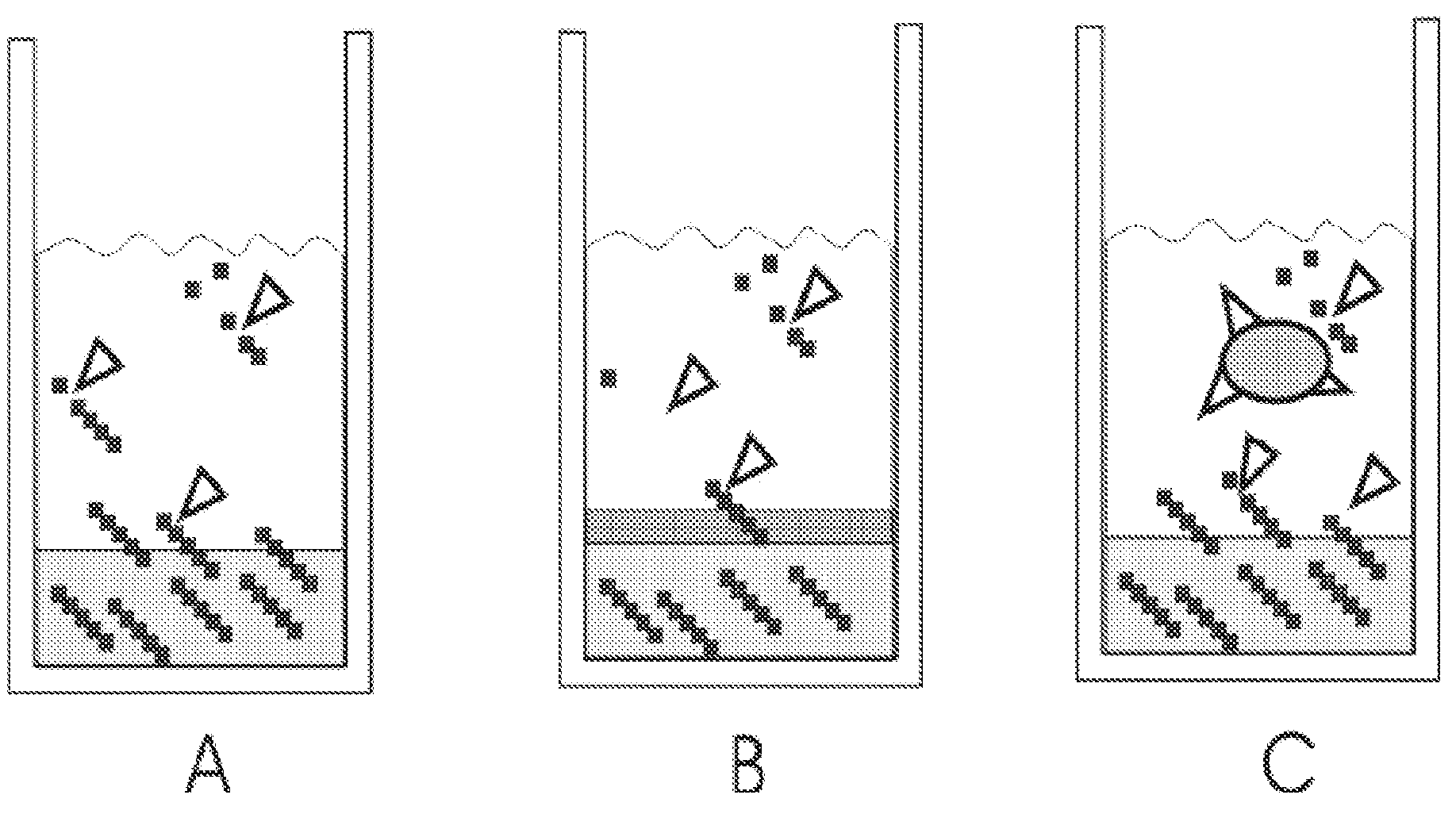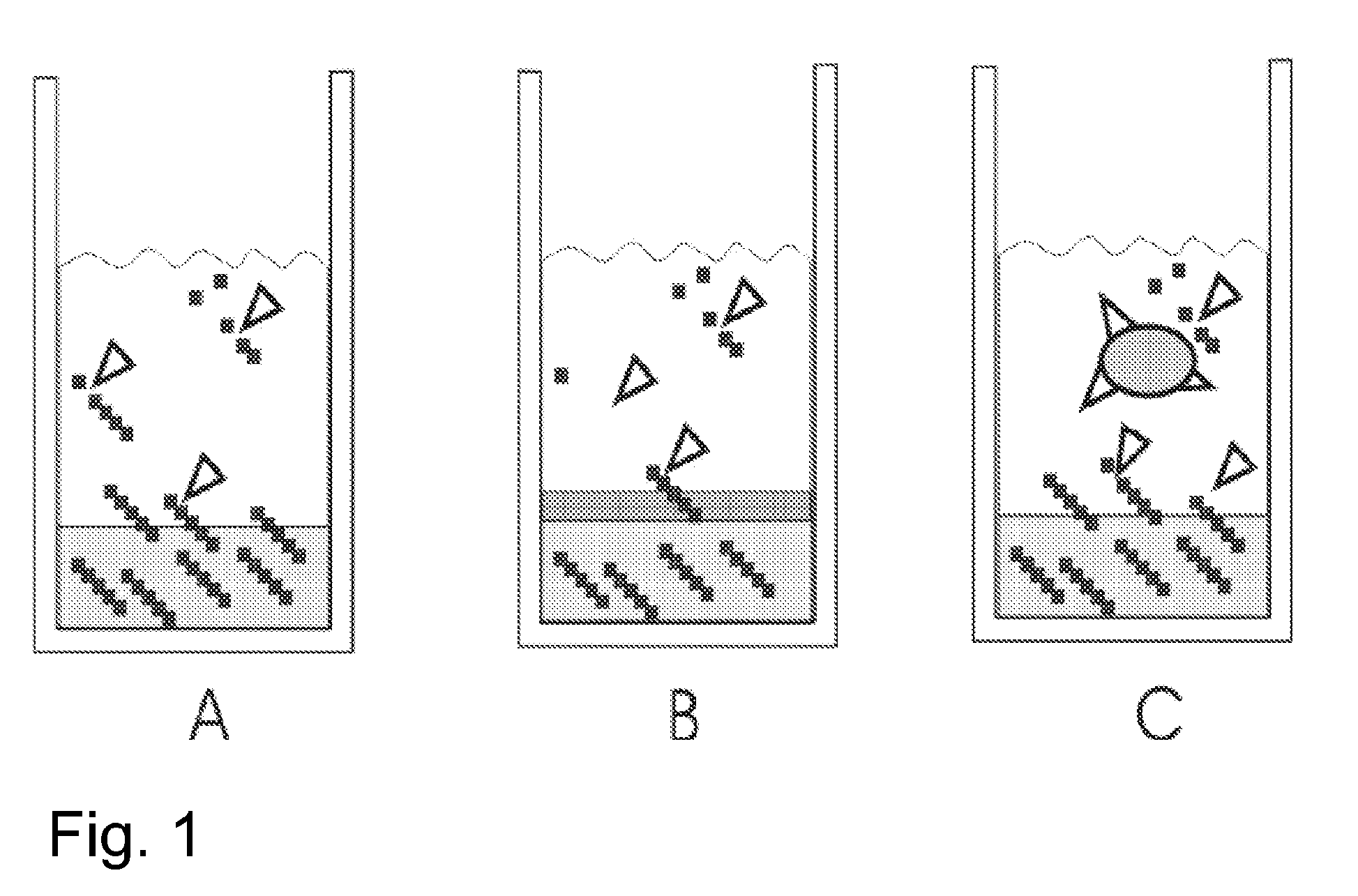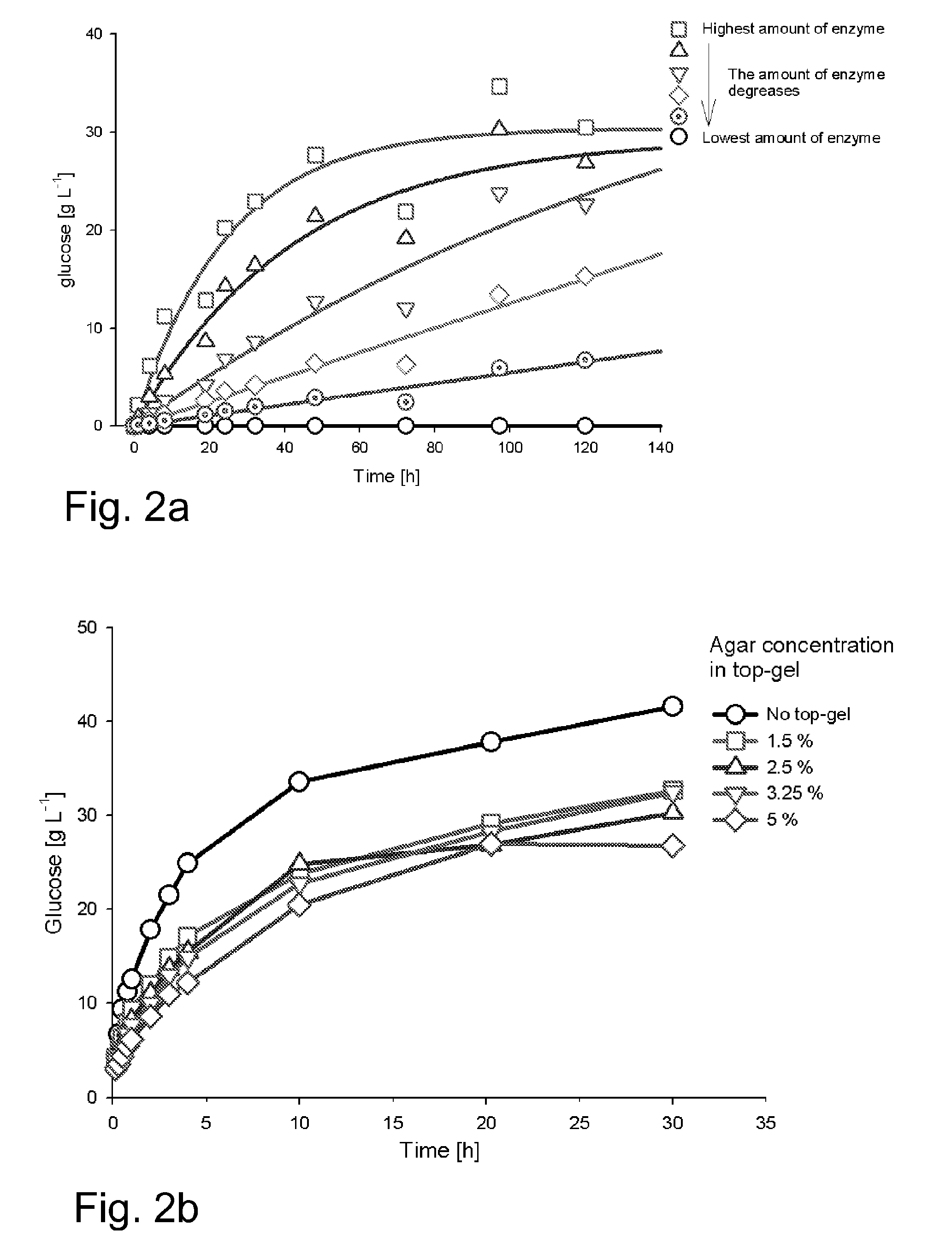Method for controlling the growth of cell culture
a cell culture and growth technology, applied in the field of high cell density cultivation, can solve the problems of uncontrolled growth, insufficient aeration, and too high substrate concentration, and achieve the effects of slow substrate release, high biomass, and fast obtaining enough bacteria
- Summary
- Abstract
- Description
- Claims
- Application Information
AI Technical Summary
Benefits of technology
Problems solved by technology
Method used
Image
Examples
examples
[0045]Example of a workable preparation method to immobilize starch to a gel is: starch (5 to 10% w / v) and agar (5 to 7% w / v) are mixed with cultivation medium or water. The mixture is sterilized in an autoclave, cooled to 60° C., shaken and then fast cooled in cold water to obtain a homogenous gel structure. After solidifying, cultivation medium (typically mineral salt medium without glucose or with low glucose content) and microbes are added.
[0046]FIG. 1 shows the principles how the method of invention can be applied. The growth-limiting substrate is derived from a polymer. The polymer is immobilized into a gel matrix which is fully or partly composed of the said polymer. The polymer is gradually released into the cultivation medium, where an appropriate enzyme (added manually) releases the growth-limiting nutrient from the polymer. To retard the polymer release rate, an extra gel can be laid over the polymer gel (FIG. 1B). To further limit the availability of the growth-limiting ...
PUM
| Property | Measurement | Unit |
|---|---|---|
| concentration | aaaaa | aaaaa |
| volume | aaaaa | aaaaa |
| volume | aaaaa | aaaaa |
Abstract
Description
Claims
Application Information
 Login to View More
Login to View More - R&D
- Intellectual Property
- Life Sciences
- Materials
- Tech Scout
- Unparalleled Data Quality
- Higher Quality Content
- 60% Fewer Hallucinations
Browse by: Latest US Patents, China's latest patents, Technical Efficacy Thesaurus, Application Domain, Technology Topic, Popular Technical Reports.
© 2025 PatSnap. All rights reserved.Legal|Privacy policy|Modern Slavery Act Transparency Statement|Sitemap|About US| Contact US: help@patsnap.com



